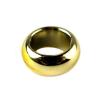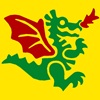| Welcome, Guest |
You have to register before you can post on our site.
|
| Online Users |
There are currently 214 online users.
» 1 Member(s) | 208 Guest(s)
Applebot, Baidu, Bing, Google, Yandex, Orion Pobursky
|
|
|
| 5724pr0001 Bubble Canopy 6x11x2 Printed |
|
Posted by: SNIPE - 2025-07-12, 15:29 - Forum: Part Requests
- Replies (2)
|
 |
I'm requesting this part because I think it would make a good le mans rece car canopy, so want to make a car from it.
an unprinted version would also be nice, although it doesn't come unprinted in any set yet.
It should be on the instructions app.
its.dimensions are 6x11x2
|

|
|
| LDConfig Update: More discontinued/Legacy Colours available |
|
Posted by: Chris Böhnke - 2025-07-09, 1:31 - Forum: Official File Specifications/Standards
- Replies (9)
|
 |
A new LDConfig Update is available:
*10 New Colours added (see below)
*Changed Name of "125 Light Orange" to "125 Spud Orange" to avoid confusion with Bricklink Colour
*Added Lego ID to Metallic Light Blue and Metallic Light Pink
Solid Colours: - 10015 Lemon (15 Lemon/171 Lemon): All Parts available. Some possible prints in Paradisa and Duplo. Retired 1994.
- 10017 Rose Pink (17 Rose/56 Rose Pink): Many Plates, Tiles, early Paradisa. Possible Pattern Reworks needed. Retired 1994.
- 121 Light Orange (121 Medium Yellowish Orange/32 Light Orange): 50% of Parts available. Chef's Hat and 1999 Winnie Pooh. Some Adventurers Prints. Retired in 2004.
- 123 Dark Salmon (123 Bright Reddish Orange/231 Dark Salmon): All Parts available, all Duplo. Some Life on Mars Prints. Retired 2004.
- 180 Dark Yellow (180 Curry/161 Dark Yellow): All 5 Parts available, all Duplo. Forum Request. Retired 2006.
- 213 Medium Blue-Violet (213 Medium Royal Blue/no Bricklink name): Single Part Use (44688). Little Robots. Part Available. Only used in 2003-2004.
- 220 Light Lilac (220 Light Lilac/246 Light Lilac): Duplo 2x2 Brick and Duplo Figure Parts. Retired ca. 2006.
- 225 Warm Yellowish Orange (225 Warm Yellowish Orange/172 Warm Yellowish Orange): Single Part Use (6490).Duplo 2004. Part Available.
Pearlescent Metallic Colours:- 342 Conductive Black (342 Conductive Black/no Bricklink name): Single Use Color. Ultra Agents Part 15411. Available. Retired 2016. Technically not a Pearlescent Colour, but that seemed the best match.
- 346 Reddish Copper (346 Copper Metallic/249 Reddish Copper): Ninjago and Friends. Several Parts available. Used from 2017-2020.
EDIT:
According to the Howerter list, both Conductive Black and Metallic Dark Grey use the same Hex Value of 3E3C39...
Any suggestions?
|

|
|
| Wookiees! |
|
Posted by: Jeff Jones - 2025-07-08, 16:48 - Forum: Part Requests
- No Replies
|
 |
as of now the only wookiee on the tracker is the old chewbacca
however since there are 5 other moulds that i would like 1 or more on the tracker, i would start in order of release
51217 wookiee warrior with armor only used in 2 sets from 2005, no raw mesh available, too old for bi. too complex (organic so no chance of it)
15307 modern chewbacca, common sw part, this is the one i would like the most to be authored. luckily mesh available ldd (either i or someone else do the print so it would be eventually be in stud.io)
15632 wookiee with armor chief tarfful mesh available bi? (doesnt show up but is around the time so should be there)
19232 generic wookiee no armor or bandolier mesh available bi
36038 young chewbacca from solo mesh available bi
|

|
|
| Colour Request: 15 Lemon and 17 Rose |
|
Posted by: Chris Böhnke - 2025-07-06, 18:17 - Forum: Official File Specifications/Standards
- Replies (9)
|
 |
With the recent inclusion of Modulex parts, I think we really should add these 2 old colours to the LDraw colour list. Both were actually used in regular sets as molding colour (though also as prints occasionally) in the early 1990s. Bricklink started to acknowledge them as well a few years ago (or maybe just months ago?).
The hex value marked as "Measured Hex" is just a quick colour pick from the photos available at Brick Colorstream. If anyone has a better idea what the hexes should be, I'm open to that. The official ones seem a bit off (though not as much as certain other colours from that era).
TLG Name: 15 Lemon
Bricklink Name: Lemon
Years active: 1992-1995?
Example: Part 4839/Set 2552
TLG Hex: #FFF230
Measured Hex: #EEDD42
This colour was primarily used in a few obscure Duplo Playhouse sets limited to the NA market, which had an all "Pastel" colour scheme. It was used at least once as print in System (3811px1). This colour is identical to Modulex Colour 15 Lemon.
TLG Name: 17 Rose
Bricklink Name: Rose Pink
Years active: 1991-1994
Example: Part 3185/Set 6401
TLG Hex: #FF9494
Measured Hex: #F3D3D3
Sometimes known as "Paradisa Pink", this was the first real pink colour released by TLG in 1991 with Duplo (first parts were limited to specialised bath room items). It saw greater use in Paradisa in 1992 for both molded plastic and prints before being replaced by the slightly less yellowish 9 Light Reddish Violet in 1995 (not to be confused by age induced yellowing, this difference is much more consistent). The Basic buckets with pastel tones from 1993 used this colour as well. Here is a good comparison:
https://www.flickr.com/photos/[email protected]@N08/
|

|
|
|